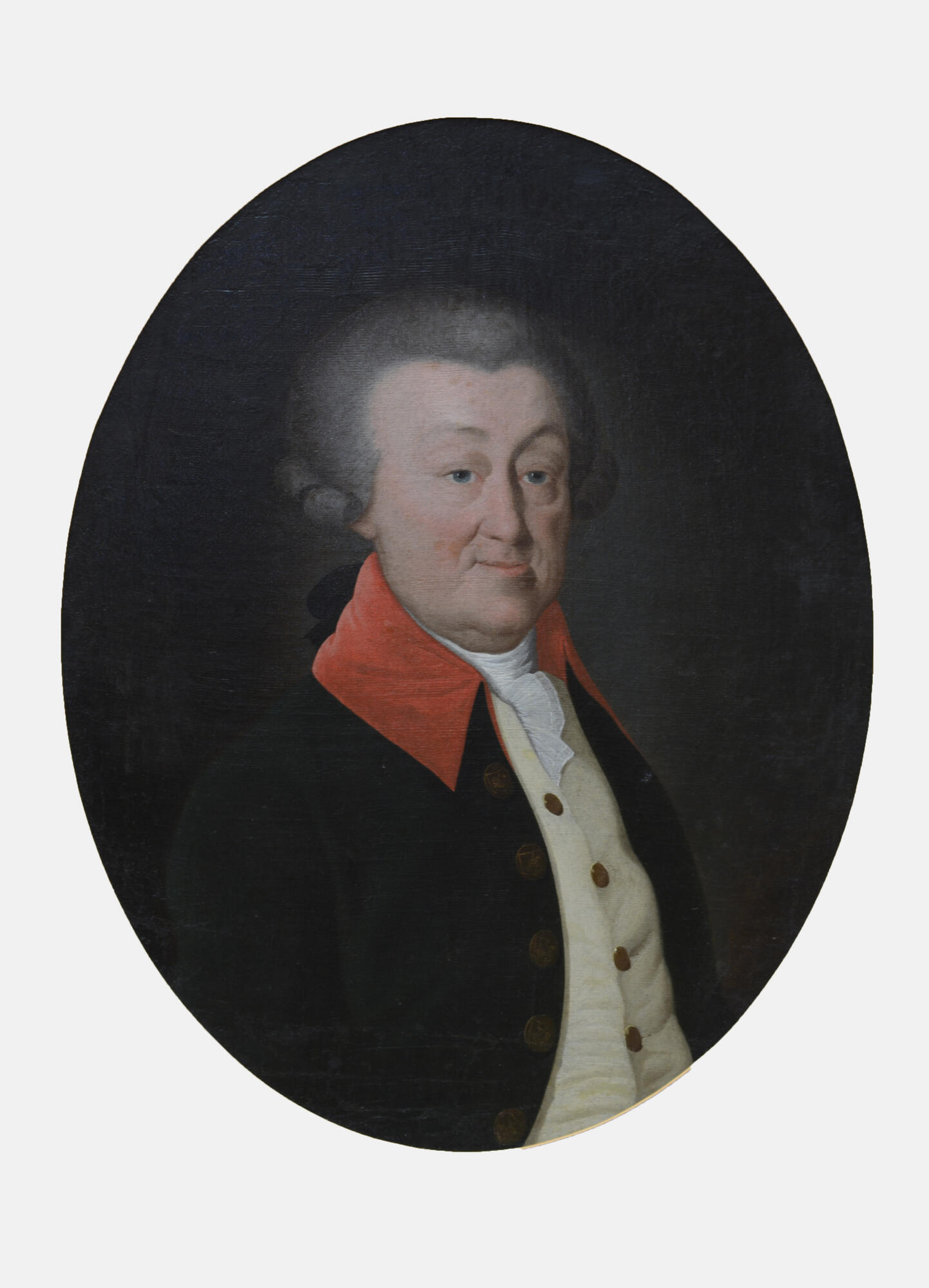This small oval painting entered the Nizhny Tagil Museum in 1984 as a portrait of an unknown man by an unknown 18th-century artist. According to the inscription on the back of the canvas, the portrayed man was probably a member of the Demidov family, although it is unclear when and by whom such an inscription could have been made. This is typical of 18th-century Russian painting which marked the appearance of the portrait genre in Russia. Later, it was established that the portrait depicts the famous nobleman, owner of metallurgical factories, and actual state councilor Prokofi Akinfiyevich Demidov (1710–1786).
In the 18thcentury, most noblemen strove to preserve their image for future generations. This portrait depicts a dignified man wearing a white waistcoat, a dark green uniform of Moscow Governorate noblemen with a high, bright red turn-down collar and metal buttons with relief images of Saint George. He wears his powdered hair up, swept back, held by a black velvet bow, and rolled in a single curl above the ears. The painter emphasized the physique that was considered fashionable in the mid-18thcentury: the man has narrow shoulders and a large belly. Although rather straightforward, the portrait is also quite expressive.
By depicting Demidov’s posture and head position,
the artist emphasizes his dignified appearance, while also showing severe
apathy on his flabby and wrinkled face. The model’s direct look and barely
noticeable sarcastic grin on his thin lips hint at his indomitable temper. With
his impassive expression, Demidov resembles a mask. First and foremost, the
artist sought to capture the features of the model’s appearance in accordance
with the traditions of 18th-century art. However, the artist also
seems to have tried to make the model look younger by smoothing out the
wrinkles. In this painting, verisimilitude and true-to-life depiction fit
alongside the requirement to somewhat embellish the model which was typical of
the 18thcentury.



